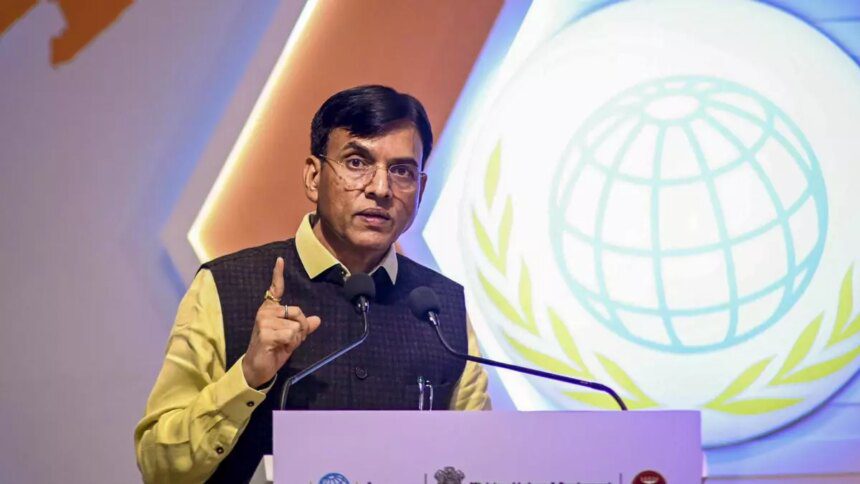Union Minister for Labour and Employment, Mansukh Mandaviya, emphasized on Monday the necessity of increasing the government’s annual infrastructure investment budget from ₹11.5 lakh crore to ₹15 lakh crore. This boost in funding is essential for achieving the vision of a developed India by 2047, as well as ensuring social security for all citizens.
In his address at the international dialogue held at the Yashobhoomi – India International Convention and Expo Center, he remarked, “The budget for 2024 stands at ₹11.5 lakh crore. To elevate India to a developed status by 2047, we need to increase this figure to ₹15 lakh crore. Without such investment over the next 25 years, our aspirations will remain unfulfilled.”
Mandaviya highlighted that social security coverage in India has seen significant improvement, rising from 24% in 2014 to 48% currently, according to the ILO’s World Social Protection Report 2024-26. He stated that nearly 920 million people, representing around 65% of the population, now have access to at least one form of social protection—either cash or in-kind benefits—through various central government schemes. He noted that India’s enhancements in social protection were a crucial factor in the global rise of social protection coverage by 5 percentage points.
Since the Narendra Modi-led government took office, the infrastructure investment budget has more than doubled, increasing from ₹1.2 lakh crore in 2012 to ₹2.4 lakh crore by 2014. Mandaviya pointed out the notable advancements made in health security, pension security, livelihood opportunities, and food security, thereby providing comprehensive support to citizens.
According to the Minister, health security now extends to 600 million individuals, offering free health coverage up to ₹5 lakh across more than 24,000 hospitals nationwide. Additionally, around 800 million people benefit from the free distribution of food grains, bolstering food security. The launch of the eShram portal has also played a key role, allowing more than 300 million informal workers to register and access social security benefits.
Mandaviya stated that social security initiatives have successfully lifted nearly 248 million people out of multidimensional poverty over the past decade. He also noted a significant increase in women’s workforce participation, which has risen from 23.3% to 41.7% in the last six years.
Addressing the rise of the gig economy, Mandaviya indicated that the new labor code has established a definition for gig workers, and efforts are underway to incorporate them into social security frameworks.
Union Minister of State for Labour and Employment, Shobha Karandlaje, underlined the importance of innovation and collaboration between the government and social security organizations to effectively close the gaps in protection for workers.
Mohammed Azman, President of the International Social Security Association (ISSA), praised India for its remarkable progress in enhancing its social security system and recognized the commitment and innovation shown by ESIC and EPFO.
Finally, Secretary for Labour and Employment, Sumita Dawra, highlighted the significance of leveraging the demographic dividend, noting that over 65% of India’s population is under the age of 35. She reaffirmed India’s dedication to delivering adequate social protections and creating quality job opportunities.










